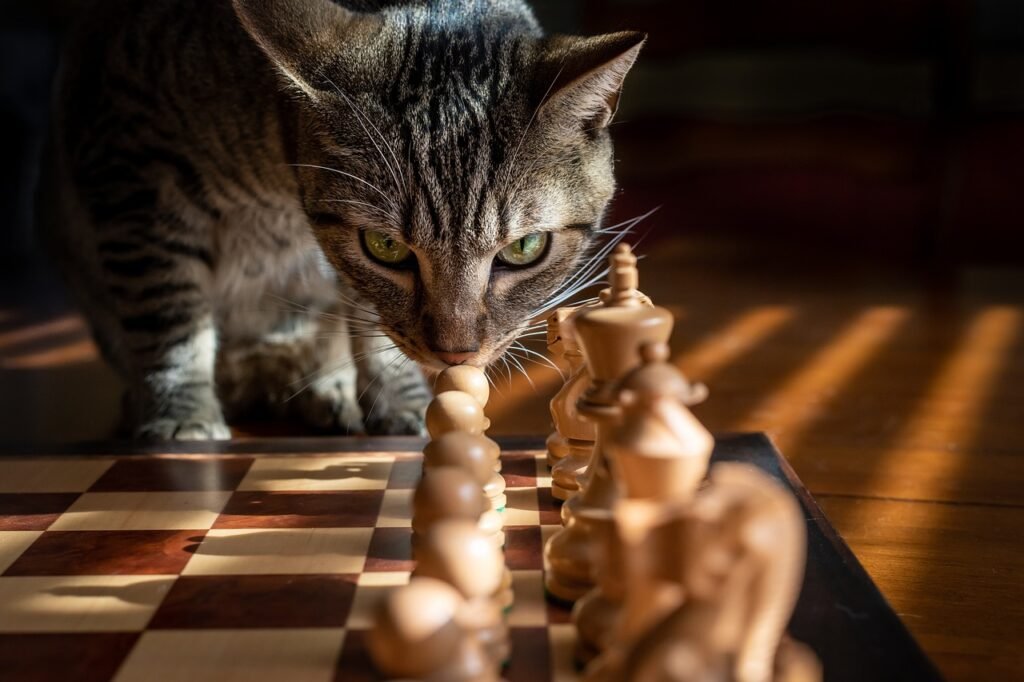Welcome to “Developing Strategic Fight Pacing,” where you’ll discover the crucial elements of managing your energy and tactics during a fight. In this article, you’ll learn how to balance aggression with conservation, pace yourself to outlast your opponent, and use strategic pauses to assess and adjust your approach. By mastering the art of fight pacing, you can transform your performance, making sure you’re always one step ahead. Have you ever found yourself out of breath or overwhelmed while sparring in the ring? If so, you might be lacking in a crucial aspect of boxing and martial arts: strategic fight pacing. Ensuring your energy lasts through each round can not only give you a physical edge but can also play with your opponent’s psyche.
What is Strategic Fight Pacing?
Strategic fight pacing refers to the deliberate control of your energy and actions throughout a match. It’s about knowing when to attack, when to defend, and when to conserve energy. A well-paced fight can make the difference between winning and losing, and it comes down to more than just physical stamina—it’s a mental game too.
Physical Stamina
Physical stamina involves your body’s ability to sustain prolonged exercise. In the context of fighting, this means maintaining your strength, speed, and coordination over multiple rounds. Factors such as cardiovascular fitness, muscle endurance, and recovery rate matter significantly.
Mental Game
The mental aspect of pacing is equally important. This includes knowing your limits, staying aware of your opponent’s behavior, and strategically planning your moves. Mental fatigue can cause lapses in judgment, so maintaining focus is key.
The Importance of Developing Strategic Fight Pacing
Understanding and developing strategic fight pacing can turn you from a good fighter into a great one. Here’s why it matters:
Energy Management
By managing your energy effectively, you can avoid exhaustion and maintain your performance throughout the fight. This involves controlling your breathing, timing your movements, and knowing when to rest.
Psychological Edge
When you pace yourself well, you can stay calm and composed, which can demoralize your opponent. They may become frustrated or panicky if they see you effortlessly managing your stamina while they struggle to keep up.
Tactical Advantage
Good pacing allows you to be unpredictable. Switching up your pace can confuse your opponent and create openings for attacks.
Injury Prevention
Overexerting yourself can lead to poor technique and vulnerabilities that might cause injuries. Proper pacing helps maintain good form and technique.

How to Develop Strategic Fight Pacing
Assess Your Current Fitness Levels
Before you can develop strategic fight pacing, you need to understand where you currently stand. Assess your cardiovascular fitness, muscle endurance, and recovery rate. This will help you identify areas that need improvement.
- Cardiovascular Endurance: Check how long you can maintain a high level of activity without feeling exhausted.
- Muscle Endurance: Evaluate how well your muscles can perform sustained, repetitive contractions.
- Recovery Rate: Measure how quickly you can recover from high-intensity activity.
Set Realistic Goals
Establish clear, achievable goals based on your current fitness levels. These goals should be incremental, allowing you to gradually improve.
- Short-Term Goals: Focus on immediate milestones like increasing your running distance or extending the duration of your sparring sessions.
- Long-Term Goals: Aim for sustained improvements over several months, such as improving your overall fight duration or reducing recovery time between rounds.
Incorporate Interval Training
One of the most effective ways to enhance your fight pacing is through interval training. This involves alternating between high-intensity and low-intensity activity.
| Training Type | Description |
|---|---|
| High-Intensity Interval Training (HIIT) | Short bursts of intense activity followed by rest or low-intensity exercise. Great for building cardiovascular endurance and fast recovery. |
| Low-Intensity Steady State (LISS) | Prolonged, consistent activity such as jogging or cycling. Ideal for building a base level of cardiovascular fitness. |
Sparring Practice
Incorporate pacing strategies into your sparring sessions. Start with a plan, but be flexible enough to adapt based on your opponent’s actions.
- Round Simulation: Practice sparring for the same duration as your actual fight rounds.
- Opponent Observation: Focus not only on your own movements but also on observing your opponent’s energy levels and tendencies.
Breathing Techniques
Proper breathing can make a significant difference in your stamina and overall fight pacing. Incorporate breathing exercises into your training.
| Breathing Technique | Benefits |
|---|---|
| Diaphragmatic Breathing | Helps increase oxygen intake and endurance. |
| Controlled Exhalation | Aids in maintaining calm and focus. |
| Box Breathing | Useful for mental clarity and reducing anxiety. |
Rest and Recovery
Don’t underestimate the importance of rest and recovery in your training regimen. Overtraining can lead to burnout and injuries, which can significantly set you back.
- Active Rest: Light activities such as stretching or walking.
- Sleep: Aim for 7-9 hours of quality sleep.
- Hydration and Nutrition: Maintain a balanced diet and stay hydrated to support recovery.
Common Mistakes and How to Avoid Them
Even experienced fighters can make mistakes when it comes to fight pacing. Here are some common pitfalls and how to avoid them:
Starting Too Fast
Many fighters come out of the gate too quickly, which can deplete their energy reserves early on. It’s important to start at a manageable pace and gradually increase intensity.
Solution: Be mindful of your initial pace. Conserve energy in the early rounds so you have a reserve for later.
Ignoring the Body’s Signals
Sometimes, the adrenaline rush can make you ignore signs of fatigue or overexertion. This can lead to poor performance and injuries.
Solution: Pay close attention to your body. If you feel overly fatigued, take a moment to breathe and reset.
Inconsistent Training
Inconsistent training can lead to variable performance levels, making it difficult to maintain strategic fight pacing during an actual match.
Solution: Maintain a consistent training schedule, incorporating various types of workouts to ensure balanced development.
Neglecting Mental Preparation
Focusing solely on physical preparation while neglecting the mental aspect can lead to poor decision-making and pacing issues.
Solution: Incorporate mental training into your regimen, such as visualization techniques and mindfulness exercises.

Tips for Maintaining Pacing During a Fight
Start with a Plan
Having a basic plan for your fight can help you pace yourself better. Know your strengths and weaknesses and plan your rounds accordingly.
Stay Adaptable
While having a plan is important, staying adaptable is crucial. Be ready to adjust your pacing based on how the fight progresses.
Utilize Your Cornerman
Your cornerman can provide valuable insights and help you manage your pacing. Listen to their advice during breaks.
Monitor Your Breathing
Keep a close eye on your breath. If you find yourself getting winded, take a moment to focus on deep, controlled breathing.
Training Drills for Improved Fight Pacing
Hill Sprints
Hill sprints are an excellent way to build both cardiovascular and muscular endurance, crucial for effective fight pacing.
Instructions: Sprint up a hill at your maximum effort, then walk back down. Repeat for 10-15 minutes.
Circuit Training
Circuit training combines different exercises that target various muscle groups and energy systems, ensuring well-rounded endurance.
Sample Circuit:
- Jump Rope – 3 minutes
- Push-Ups – 1 minute
- Shadow Boxing – 3 minutes
- Plank – 1 minute
- Heavy Bag Work – 3 minutes
- Rest – 1 minute
Repeat 3-5 times.
Sparring Rounds with Variable Intensity
Practicing sparring rounds with deliberate changes in intensity can help you get used to adjusting your pace during a fight.
Instructions: Spar with a partner, alternating between 30 seconds of high intensity and 30 seconds of low intensity.

Evaluating Your Progress
Keep a Training Journal
Maintaining a training journal where you record your workouts, sparring sessions, and overall performance can help you identify trends and make adjustments.
Assess Sparring Sessions
Review your sparring sessions to evaluate your pacing. Look for times when you ran out of steam or when you could have used your energy more effectively.
Use Performance Metrics
Utilize performance metrics like heart rate monitors, punch counts, and video analysis to get a detailed picture of your conditioning and pacing.
Conclusion
Developing strategic fight pacing is a game-changer in the world of combat sports. It requires a combination of physical endurance, mental strength, and tactical awareness. By understanding your current fitness levels, setting realistic goals, incorporating interval training, practicing proper breathing techniques, and avoiding common mistakes, you can significantly improve your fight pacing.
Remember, the key to mastering fight pacing is consistency and adaptability. Keep training, stay focused, and continually assess your performance to make the necessary adjustments. With time and practice, you’ll find yourself not only lasting longer in the ring but also outsmarting and outpacing your opponents. Happy training!

